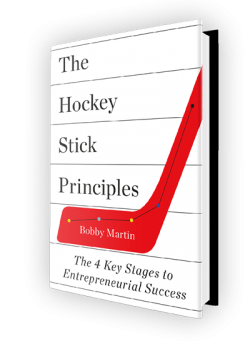“If a thing is worth doing, it is worth doing badly.” —G. K. Chesterton
I learned the hard way just exactly what this weird quote means. In 2007, my salesperson-friendly industry research company, First Research, was sold to Dun & Bradstreet for $26.5 million. But early on in the life of First Research, my fledgling company was in a sad state.
 When First Research was initially formed in 1999, I was a burned-out 29-year old banker with little business experience. What I did have was a novel idea for an online product that would help salespeople quickly prepare for calls by researching their prospect’s industry, and on April 15, 1999, after quitting my day job, First Research opened for business. Eight months later, our progress was as follows:
When First Research was initially formed in 1999, I was a burned-out 29-year old banker with little business experience. What I did have was a novel idea for an online product that would help salespeople quickly prepare for calls by researching their prospect’s industry, and on April 15, 1999, after quitting my day job, First Research opened for business. Eight months later, our progress was as follows:
- First Research had one customer, far from the 25 customers I had forecasted in my plan.
- First Research had produced 40 Industry Profiles, far from the 170 I had anticipated.
- I had no concrete evidence that anyone wanted our product. While several bankers thought our product was interesting and helpful, I was at a stalemate in terms of their commitment and willingness to sign on the line which is dotted.
- I hadn’t pinpointed a market for prospective buyers. I had planned to sell to banks, but limited success with them had me experimenting with other types of buyers, who also were not interested.
- Maintaining our product had become more work than originally planned. We hired a part-time MBA student to help. The first two students didn’t work out – one quit and one I had to let go. I thought, “If I can’t hire and manage for this simple job, how will I one day hire and manage dozens of employees?“
- To find some personal income and make ends meet, I was spending precious time completing one-off research projects for companies instead of selling First Research. This wasn’t in my business plan.
- Some people were not taking my idea seriously. One banker told me, in a deep Southern accent, “Bobby, we’re the bank; this is already what we do. I don’t want to see you get in too deep with this sil-lee thing, son.” (Calling me “son” was almost more than I could take.)
I truly believed that my company had tremendous potential, but despite my best efforts–as G.K. Chesterton summarized in his quote–until I learned from trial and error, I was doing things badly.
The lowest point in the early days of First Research was the result of a simple mishap. I worked out of a home office, and I had this a 8 ½ x 11 sheet of paper hung on the wall with a handwritten reminder: “Thousands will Pay a Thousand Dollars for First Research.” The mini-poster actually meant a lot to me because it was my source for hope. But when a friend was visiting, he noticed, laughing hysterically, that I had made an error and spelled it ReRearch. I thought that mistake was symbolic that perhaps it was time to throw in the towel.
But I didn’t. I hung in there and made a few decent sales the next year and managed to eventually build a real business–a $26.5 million business.
From my own experience as well as talking to hundreds of other successful founders, I’ve found these “badly done things” are often par for the course.
Sign up to get more great insights directly to your inbox.
As a special bonus, you'll also immediately get access to my inside analysis of what made 172 diverse companies achieve take-off revenue growth.
